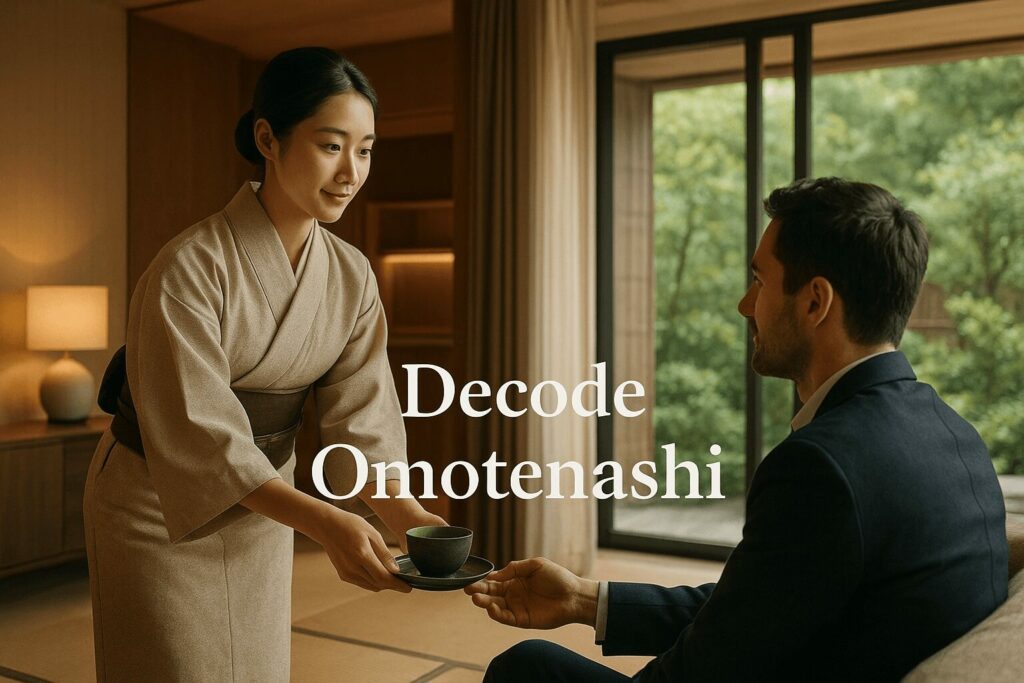
Omotenashi Meaning: Japan’s Selfless Hospitality Philosophy
Ever wondered what “omotenashi meaning” really is? 😅 It’s not just “hospitality” – it’s the soul of Japanese care, where every gesture feels personal, almost magical. This article dives deep into the heart of omotenashi, from its tea-ceremony roots to the tiny, thoughtful acts that make travelers swoon – like Shinkansen cleaners bowing to passengers or chefs crafting sushi with ichigo ichie (treating each moment as one-of-a-kind). Spoiler: it’s untranslatable, blending selfless service with no expectation of reward. Ready to decode why Japan’s hospitality feels like a warm hug? Let’s roll! 🌸
Article Takeaways
Omotenashi is Japan’s philosophy of selfless hospitality that goes beyond conventional customer service. Rooted in centuries-old traditions, it involves anticipating guests’ needs before they’re expressed, with no expectation of recognition or reward. In hospitality settings, this manifests through meticulous attention to detail—from seasonally-adjusted towels in restaurants to staff remembering individual preferences without being asked. The essence lies in creating flawless experiences through invisible, intuitive service where every gesture feels personal rather than transactional. This approach transforms ordinary interactions into memorable moments, making guests feel genuinely cared for through subtle, thoughtful touches that appear effortless.
- What’s all the buzz about omotenashi?
- The real omotenashi meaning: more than just service
- Where Does Omotenashi Come From? A Trip Back in Time
- The core principles behind the magic
- So what does omotenashi look like in real life?
- How to be a good guest: omotenashi is a two-way street
- Bringing a piece of Omotenashi home with you
Omotenashi Meaning in video
What’s all the buzz about omotenashi?
Ever felt like someone read your mind while traveling? 🤯 Japan’s omotenashi makes it happen. It’s not just “good service” – it’s a cultural superpower. Same as Filipino hospitality is unique, Japanese culture has its own approach of welcoming people.
Think of it as hospitality on steroids, minus the flashy moves. This isn’t about scripted smiles or transactional exchanges. We’re talking selfless care that starts before you even realize you need something. Crazy, right? 🤯
Originating from centuries-old tea ceremonies, omotenashi means serving with your whole heart. No ego. No expectation of “thank you.” Just pure, unspoken understanding between host and guest. You’ll spot it when a shopkeeper whispers “irasshaimase” without interrupting their flow, or a train cleaner bows as you pass. Yep, even tiny gestures count!
Need pronunciation help? Say it with me: oh-moh-te-nah-shee 👏. Easy, huh? Now imagine this mindset woven into every interaction – from ryokan inns to Tokyo’s vending machines. Spoiler: later we’ll show how this shapes Japan’s wildest hospitality moments. Ready to geek out on cultural magic? 🎉

The real omotenashi meaning: more than just service
It’s not what you think
Alright, let’s talk about Omotenashi. Spoiler: it’s more than « Japanese customer service. » 🤯
While « hospitality » is the closest English match, it misses the heart: serving guests with no hidden strings. No « you scratch my back » energy. Just pure, selfless dedication to creating unforgettable moments. This approach is woven into Japan’s cultural fabric, shaping interactions from tea ceremonies to everyday transactions.
Think of it as the opposite of the Western « customer is always right » mindset. Japanese staff don’t just follow scripts or expect tips. They anticipate needs before you realize them. Like that personalized note in your hotel room or a server adjusting your seat for comfort. Yep, that’s Omotenashi in action. 🌸
It’s why Tokyo’s restaurants serve oshibori (warm towels) seasonally. This shines brightest in ryokan where staff prepare your bath perfectly – no asking required. Even train attendants bow to passengers! That’s the Omotenashi meaning: service that feels personal, not performative.
Let’s break down the word
Quick language lesson! The word « Omotenashi » (お持て成し) has poetic roots:
- Omote (表) = « face » or public persona
- Nashi (無し) = « without » or « nothing »
Combined, it means service with « no hidden faces. » 🌕
Radical transparency: hosts show genuine selves without hidden motives. No fake smiles. Just pure hospitality perfected over centuries.
Think of Imabari towels in luxury hotels – perfectly soft, absorbent, temperatured just right. Not just fabric, but a message: « We care about each detail. » That’s Omotenashi: making you feel special through subtle touches that matter. 💡
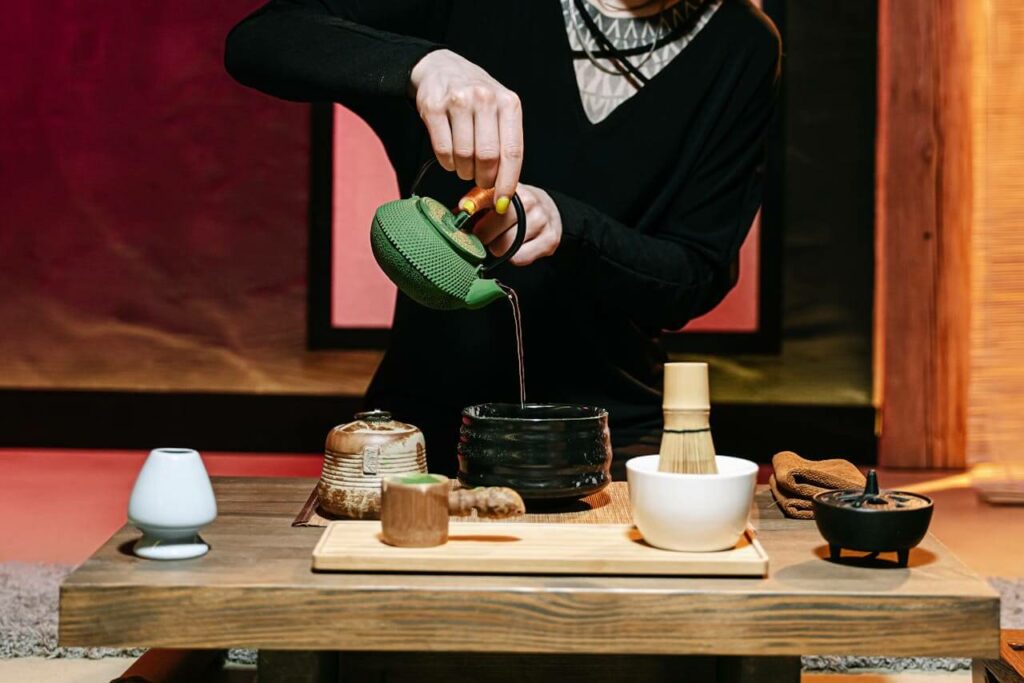
Where Does Omotenashi Come From? A Trip Back in Time
Let’s rewind to 16th-century Japan 🕰️—the birthplace of omotenashi lies in the tranquil art of the tea ceremony, or sado. Imagine sipping matcha in a minimalist room, every detail crafted for your comfort. That’s omotenashi: hospitality from the heart, not a transaction.
The Art of the Tea Ceremony
The tea ceremony isn’t just about drinking tea—it’s a dance of mindfulness. The host obsesses over which cup to use, how hot the water is, even the angle of the whisk. Why? To create harmony and respect. It’s not performative; it’s pure intention. 🍵
Enter Sen no Rikyu, the OG tea master. This 16th-century legend turned sado into a spiritual act. He believed true hospitality came from a “heart pure as snow.” His mantra? “Serve guests without expecting thanks”. Radical, right? Even today, his philosophy echoes in every bow at Tokyo’s ryokans.
Think of omotenashi as invisible service. No flashy smiles—just anticipating needs. Like finding your shoes perfectly aligned post-ceremony, or a towel warmed to body temp in a bathhouse. It’s the joy of giving without a “you’re welcome” expected. 🎭
So next time you hear “irasshaimase!” in a Tokyo shop, remember—it’s centuries of omotenashi at work. No script, no spotlight. Just quiet, perfect care. Isn’t that a vibe worth stealing?
The core principles behind the magic
Ever been amazed by a service that feels… magical? 🎩✨ That’s Omotenashi in action! It’s not just about smiling politely or handing over a coffee—it’s a mindset that turns ordinary moments into unforgettable experiences. Let’s break down what makes this philosophy so special.
Anticipating needs you didn’t even know you had
Picture this: You’re sipping tea, and poof—your cup magically refills before you even glance at it. That’s Kikubari (気配り)! 🌟 It’s the art of reading the room (or your tea cup) and acting before a request is made. Think of it like a host who senses your glass is half-empty and tops it up with a ninja’s stealth. No clinking glasses, no awkward pauses—just smooth, seamless care. Lexus nails this with car hatches that open hands-free when you’re juggling groceries. Clever, right? 🚗
Every moment is precious
Now, let’s talk about Ichigo Ichie (一期一会)—a fancy way of saying “treasure this moment like it’s your last!” 🌸 Translating to “one time, one meeting,” it’s about treating every interaction as a once-in-a-lifetime encounter. Imagine a tea master who spends months planning a ceremony’s tiniest details (seasonal flowers, bespoke sweets) because this shared moment? Unrepeatable. Even Japan Airlines gets in on the act: they line up luggage handles facing passengers at Heathrow, saving you a fumble after a 12-hour flight. 😳
- Anticipation of needs (Kikubari): Sensing what your guest wants before they even blink.
- Selfless service: No “great job!” expected—just pure, unspoken care.
- Attention to detail (Ichigo Ichie): Because this exact moment will never happen again. Make it count!
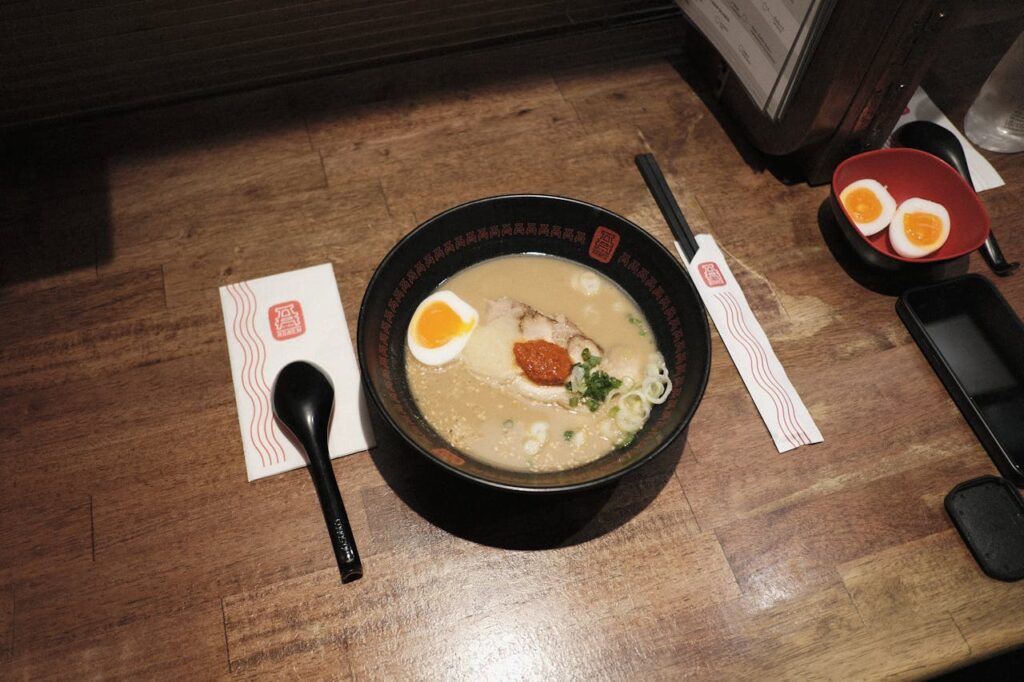
So what does omotenashi look like in real life?
Alright, let’s cut to the chase—omotenashi isn’t just a buzzword. It’s the invisible thread tying together everyday moments in Japan. From train stations to tea cups, here’s how it plays out. 💡
Restaurants: Warmth Before The First Bite 🍣
Ever heard a restaurant staff shout “Irasshaimase!” in unison? That’s omotenashi. Pair it with a steaming oshibori towel (no asking needed) and a chef casually explaining today’s catch. No fluff—just anticipating your comfort.
Shops: Wrapping Love Into Every Package 🎁
Buy a snack? Expect origami-level wrapping. No extra charge. Staff bow you out until you’re out of sight. It’s not “customer service”—it’s making the act of giving feel special.
Transport: Speed + Respect In 5 Minutes 🚅
Shinkansen cleaners finish a car in 5 minutes, then bow to the empty train. Why? Respect for future passengers. It’s not efficiency—it’s honoring unseen guests.
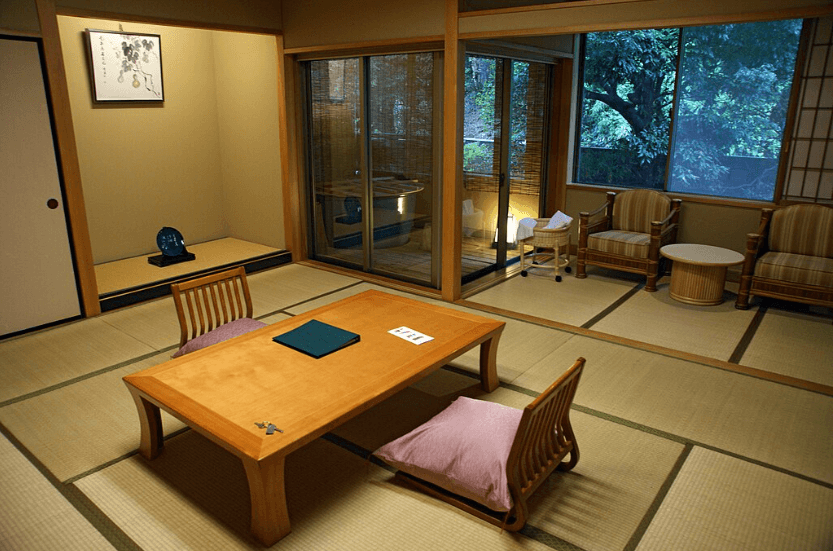
Hotels & Ryokans: No Detail Overlooked 🍵
At a ryokan, your room’s temperature adjusts before you arrive and staff might leave a handwritten note in your language. When housekeeping department clean your room, the maids remove their shoes before getting in. It’s not about luxury—it’s pre-emptive care.
| Situation | Standard Service | Omotenashi in Action |
|---|---|---|
| Entering a restaurant | A simple “Hello” | A warm “Irasshaimase!” from all staff |
| Finishing a meal | The bill is brought to the table | A hot towel (oshibori) is provided and tea is refilled without asking |
| Shopping for a gift | The item is placed in a standard bag | The item is beautifully and meticulously gift-wrapped for free |
| Checking into a hotel | The receptionist hands over the key | Staff escort you to your room, explaining features along the way |
Omotenashi isn’t about theatrics. It’s the art of reading air—no words needed. From train cleaners to tea servers, it’s a silent promise: “You matter.” And honestly? That’s a vibe worth experiencing. 🌸
How to be a good guest: omotenashi is a two-way street
You’ve heard about Japan’s legendary hospitality—but here’s the twist: omotenashi isn’t a one-way street. 🤝 It’s a delicate balancing act where your actions matter just as much as the service you receive. Think of it as a dance: both host and guest play their part to create that flawless harmony. Ready to nail your role?
A quick guide to nailing your part
Omotenashi thrives on mutual respect. Here’s how to keep that balance:
- ⏰ Be on time: Punctuality isn’t just polite—it’s a love language. Your 7:00 PM dinner reservation? They’ll be ready down to the second.
- 🧹 Respect the space: Found that perfect ryokan room? Keep it tidy! This honors the preparation effort—bonus points for neatly folding your futon.
- 🙏 Show gratitude: Master the art of “arigatou gozaimasu” (thank you very much). Pair it with a slight bow for instant cultural brownie points.
- 🍽️ Follow the house rules: That super-exclusive sushi spot? They’re not being dramatic when they ask you to eat the fish within 30 seconds. Subtlety is key when aroma matters—skip the perfume.
Remember: Omotenashi isn’t about being served like royalty. It’s about connecting through small acts of kindness. Omotenashi is “the invisible thread” weaving hosts and guests together. So next time someone says “irasshaimase!” (welcome!), smile back—and you’ll already be doing it right. 🌸

Bringing a piece of Omotenashi home with you
Omotenashi isn’t just about perfect service—it’s a mindset of giving without expecting anything back. 🧡 It’s the invisible thread connecting every thoughtful gesture, like how Tokyo’s taxi drivers open doors for passengers or how chefs prepare dishes with care tailored to the season. This philosophy turns ordinary moments into meaningful connections.
You don’t need to be in Japan to practice Omotenashi. Think of it as adding a dash of intention to your daily routine—whether it’s with family, friends, or strangers. Small actions spark big impacts. Let’s break it down:
- Truly listen when someone talks, even if it means silencing your inner voice.
- Anticipate a friend’s needs—offer a cold drink on a sunny day before they ask.
- Put your phone away during meals to be 100% present with your crew.
- Do something kind for a stranger, like holding a door or leaving a coffee for a tired coworker.
These habits mirror how Japanese hospitality thrives on foresight, like hotel staff adjusting chairs for business travelers or chefs serving seasonal dishes. The magic? It’s not transactional—it’s about making others feel seen. Think of it as adding a little more care to your world. It’s a small change that adds up! ✨
Omotenashi isn’t just top-tier service—it’s a cultural superpower rooted in Japan’s tea ceremonies, where every gesture whispers “you matter.” From Shinkansen crews bowing to oshibori towels materializing mid-meal, it’s about seeing others’ needs before they do. Take this mindset home: listen deeply, act without expectation, and turn small acts into big impacts. ✨ Who knew kindness could feel so… effortless?
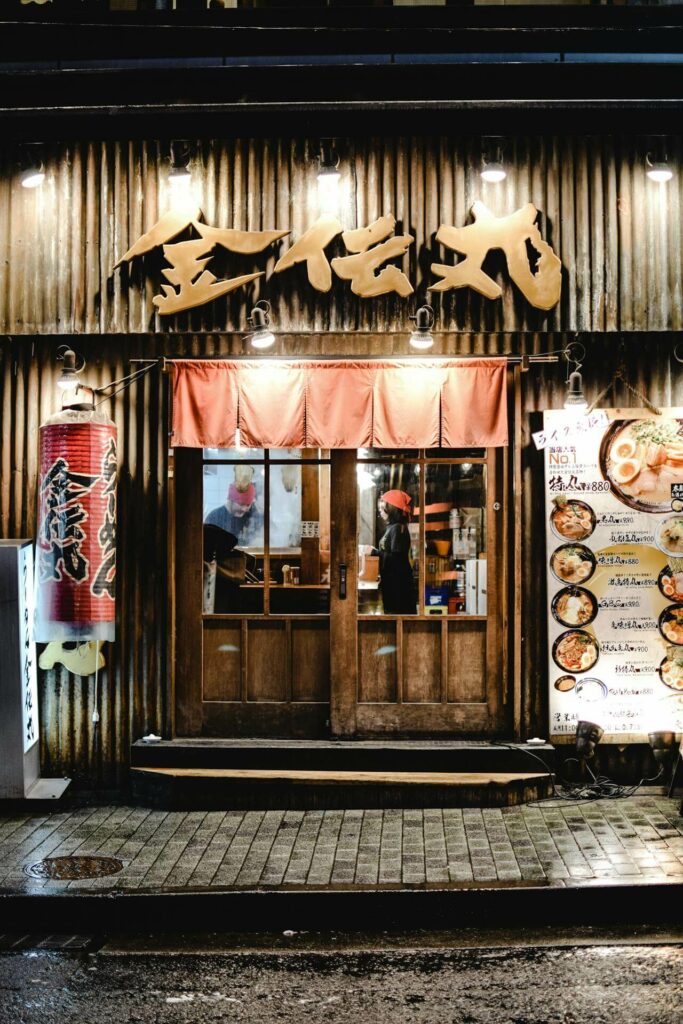
Q / A About Omotenashi Meaning
What are the three principles of omotenashi?
Alright, let’s break down omotenashi’s magic! 🎯 At its core, it’s about three big ideas: anticipating needs (like refilling your drink before you even think to ask), treating every moment as unique (because hey, you’ll never share this exact experience again), and selfless service—no expecting thanks or tips here. It’s all about giving from the heart. 💛 Think of it as the art of “reading the air” to make people feel truly cared for.
What is an example of omotenashi?
Picture this: You’re walking into a Tokyo ramen spot, and the staff shouts a synchronized “Irasshaimase!” (Welcome!) with big smiles. Or imagine the Shinkansen cleaners bowing to passengers after scrubbing the train—yep, that’s real. Even hot towels (oshibori) handed to you as you sit down? Classic omotenashi. It’s those tiny, thoughtful gestures that make you go, “Whoa, this place gets me.” 🙌
Is omotenashi expected in Japan?
Absolutely, mate! It’s baked into Japanese culture, from the way store clerks wrap your purchase like a gift 🎁 to strangers returning your dropped wallet with everything intact. Locals live by it, and visitors get to soak it up like free spa treatment. Pro tip: You’ll notice it most in ryokans, train stations, and even vending machine etiquette. It’s not just “good service”—it’s how Japan rolls. 🚅✨
Can omotenashi be taught?
You betcha! While it’s deeply rooted in upbringing, companies train staff to master the “vibe” through role-playing and mindfulness. Think of it as learning to read a guest’s energy—practice makes perfect. Schools even teach kids to “see with the heart,” and corporate Japan drills it into newbies. It’s not about scripts; it’s about cultivating that “I’ve got your back” mindset. 🌱
What are the 5 S’s Japanese principles?
Wait—this one’s a bit of a mix-up! 😅 The 5 S’s (Seiri, Seiton, Seiso, Seiketsu, Shitsuke) are actually from lean manufacturing, not omotenashi. But Japan’s got plenty of other frameworks! For omotenashi, focus on principles like kikubari (anticipating needs), ichigo ichie (treasuring the moment), and selfless service. Different ballgame, same cultural depth. 🧘♂️
What is a kokoro?
“Kokoro” (心) is the secret sauce of omotenashi—it means heart, spirit, or soul. It’s about serving with pure vibes, not just going through the motions. Like when a chef makes sure your tea’s at the perfect temp without you asking. It’s that “I see you” energy that turns transactions into meaningful moments. 🫶
What is too revealing in Japan?
Keep it modest, fam! 👚 In Japan, super short shorts, crop tops, or backless dresses might raise eyebrows—especially in temples or traditional spots. Even bathing suits? Cover up with a light shirt when walking to the onsen. It’s all about respecting local vibes and keeping things classy. 🙏
What is the meaning of Wabi-Sabi?
Wabi-Sabi is Japan’s love letter to imperfection. 🍂 It’s finding beauty in the cracked teacup, the weathered wood grain, or a fleeting sunset. Think of it as embracing life’s “flaws” and seeing magic in the temporary. It’s the antidote to glossy, filtered perfection—raw and real, just like life. 🌸
What are the three types of Japanese scripts?
Japanese writing’s a trio! 🎶 Hiragana (curvy for beginners), Katakana (edgy for loanwords), and Kanji (chiseled-in-stone characters with meaning). Imagine reading a menu where the same word mixes all three—chef’s kiss! 🍣 Kanji’s the tricky grandparent, but it’s what gives Japanese its poetic depth.
